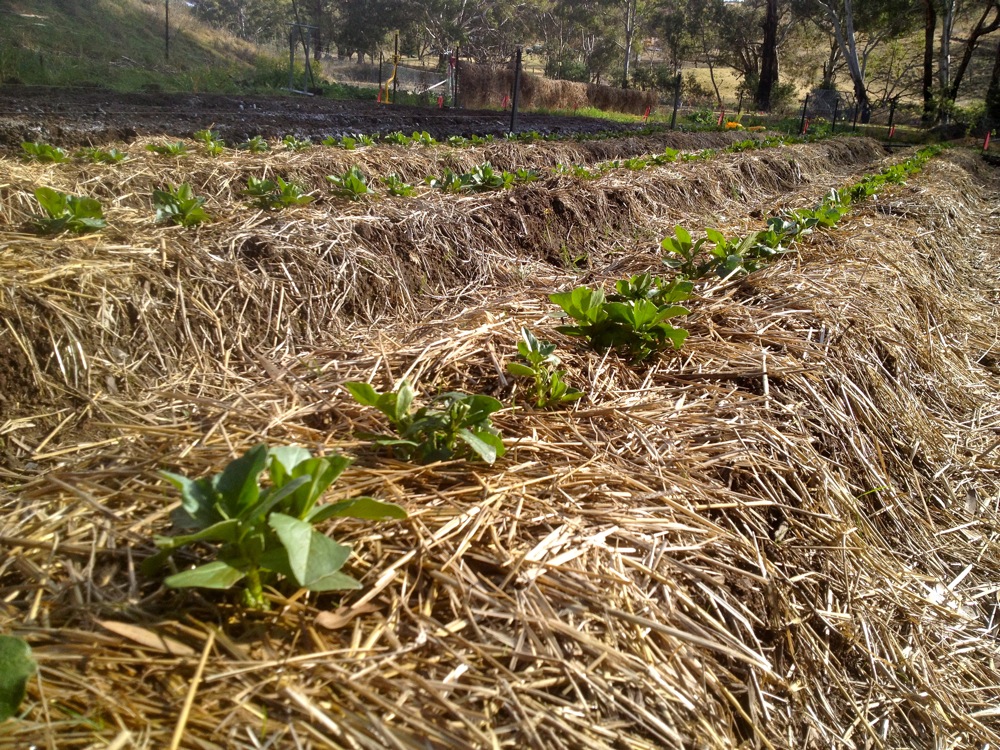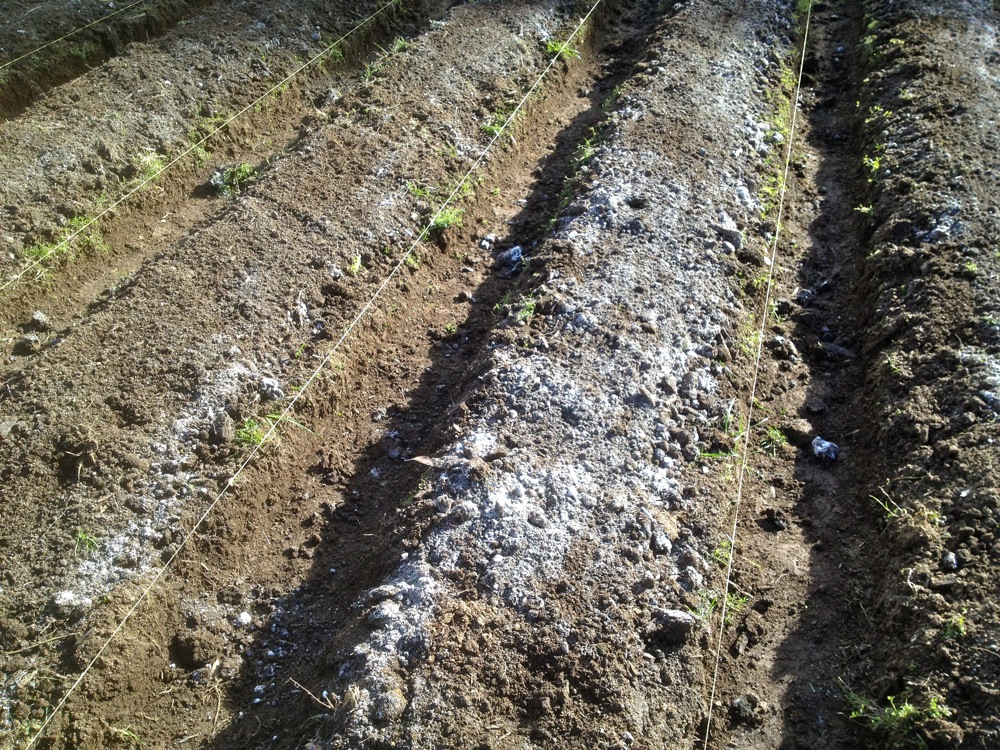As spring slowly creeps towards us, things are stirring in the market garden… time to introduce our new Market Gardener, and plant field peas!
Enter Michael Hewins, who, after joining us as a very experienced wwoofer for some months last season at Milkwood Farm, has returned to take on the organic market garden as an integrated enterprise.
Following on from our first year of experimenting with market gardening at Milkwood, we’re ready to grow the idea (and the land area) of this project.
The entirely fabulous Stephen Couling, who stewarded the market garden so well through it’s start-up year while completing a traineeship in Organic Agriculture, is off to greener pastures (very exciting). Michael, with his years of experience in organic market gardening, is the next step in this story. We’re so excited to have him at the farm from here on in!
Despite hurting his arm quite badly just after arriving at the farm last weekend, Michael will soon be into it, prepping the existing market garden area with Stephen’s help for spring, and planning an expansion of our market garden fence, to incorporate a wider area of the creekflat into intensive production.
It looks likely that we’ll have a surplus of organic produce this year above and beyond what we need for our on-farm courses, events and seasonal live-in crew, interns and wwoofers. So this season will be the beginning of something new – distribution of surplus!
Will we be able to hit our goal of providing 90% of our ongoing vegetable inputs needed for the farm by Christmas? I don’t exactly know – this is farming – anything could happen. But it looks likely. The work has begun, and spring is on it’s way.
A year in, the soil has transformed within the market garden – 12 months of nutrient-trench paths (filled with manure and mulch) have revolutionized the resident worm count, with help from the winter green manure plantings and all the other inputs of compost, rock dust and chicken manures that have been added to this patch over the last 12 months.
Stephen planted 4 rows of broad beans a while back which are now coming up and which we’ll start eating in mid-september or so – ah, broadbeans – love em!
Next up is dwarf peas, which Michael is planting. Dwarf peas should yield 300-400g of shelled peas per plant, and are a good fast crop that we’ll take out in late spring, making room at just the right time for the summer delights of capsicum, eggplant, tomato and so on.
The peas will also help fix nitrogen in the soil (as will the broad beans), which will add to the overall fertility of the garden. And they will also taste great too.
We planted the peas in double rows in each bed, 10cm apart. His nifty aid of a piece of cutoff re-bar has squares of precisely 10x10cm, which makes planting without a seeder possible while ensuring the rows don’t wiggle or the space between pea plants truncate.

Planting peas with the aid of a 10x10cm scrap of re-bar

A strawbale bed of garlic, just outside the market garden – an experiment of Stephens’, which has worked well and not been munched by bunnies… yay!
For me, this marks the beginning of the season, and we’re hoping it will be an amazing year of growing and learning for everyone. We’re especially stoked that the market garden’s future has turned out this way – Michael worked with Stephen extensively last season, and so this is in some ways a natural progression, as this project moves from one set of caring and committed hands to another…
Fortunately, Stephen will still be with us for another few months or so, so it will be all systems go down in the market garden, with the first of the season’s market garden interns joining us soon also. Yay for learning new skills, and growing great food!

Team OMG – Michael (incoming) and Stephen (outgoing), as snapped last November. Growers of good things both.
If you’d like to learn the basics of small-scale, organic market gardening, you can join us in September, or check out our future organic market gardening courses…
>> The backstory of the Milkwood market garden is here…


















“…strawbale bed of garlic…”
This looks interesting. How does it work? Is the garlic just planted into an old bale of hay? Or is there more to it than that?
Excellent post very informative pictures. Straw bale garlic now thats something i would like more info on. A future post I hope. Now back to planting the 20 heritage apples, 10 hazelnuts, a couple each of pear/cherry/plum and 8 varieties of quince i just had delivered. Keep up the good work.
Cheers
Andrew
Love that last photo. It’s super sweet!
Wonderfully educational post… I’d love to do the weekend course… saving money now!
Would like to find out more about the straw bale garlic thingy, how was it done?
Hi Kerten,
Where do you buy your rock dust ? Can’t find any around here (Southern Highlands)
Thanks, Lucy
The raised straw bale garlic patch is just straw bales made into a simple border to contain soil. The idea was to use the bails as form work, creating essentially a temporary raised garden bed as the bails will eventually completely digest. We then filled up the bed with soil, mostly the root systems of the grass pulled out when the initial prep of the garden was done, then layered with compost on the top to which we planted the garlic into. Has grown a crop of potatoes quite well and now garlic, without any hassling from the rabbit population… Read more »
Hi Lucy,
The rock dust used in the bed prep (basalt dust/fines) was purchased in mudgee from a landscaping suppliers. There is a basalt mine close by to mudgee so it is a ready local supply. It is just a standard basalt fine/bluemetal product, full of a good diversity of mineral that will slowly weather and be released over time. The Aglime, dolomite, rock phos you should be able to get or order from any rural buying or produce store, although they often have an minimum order qty.